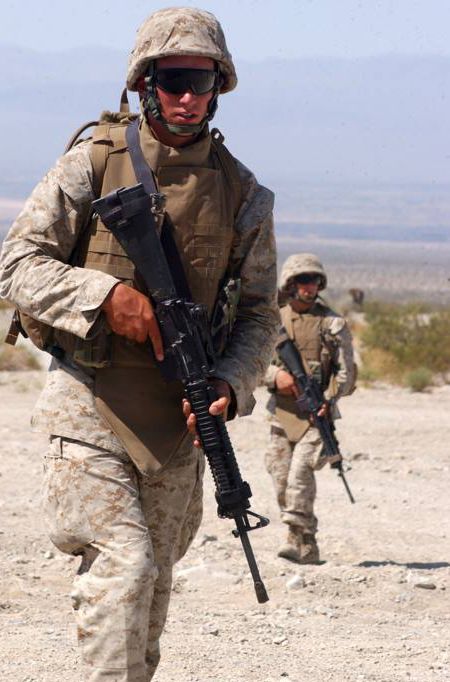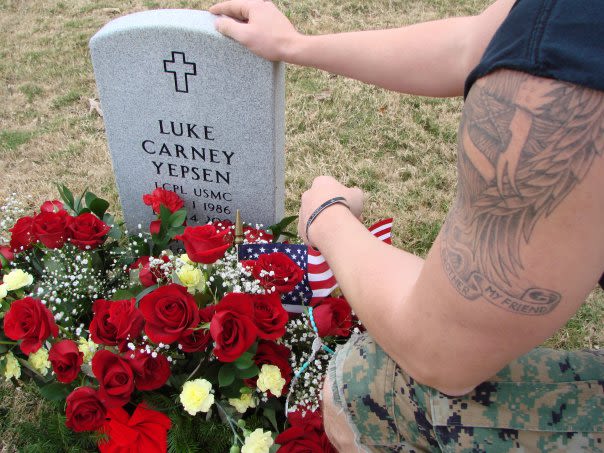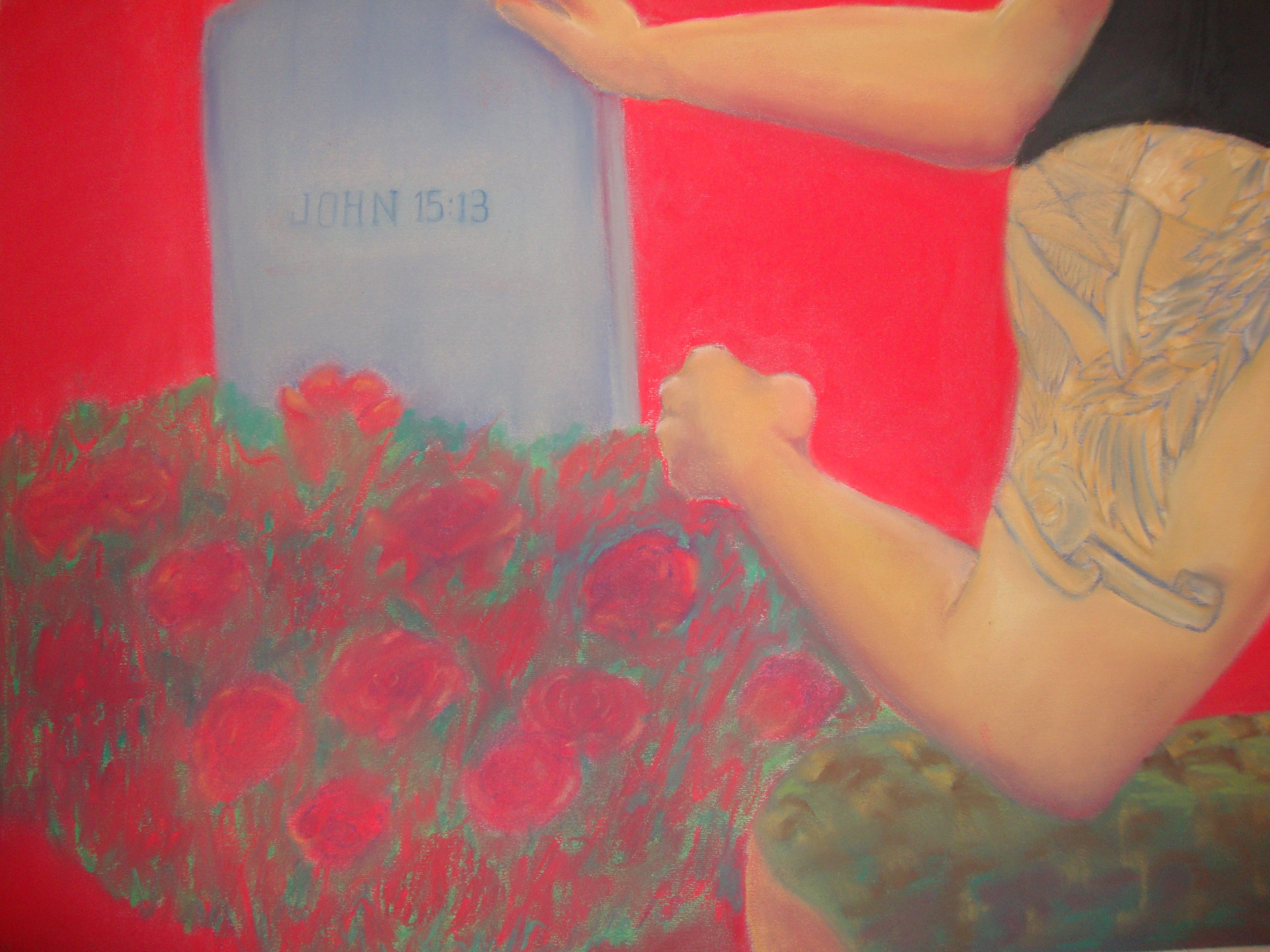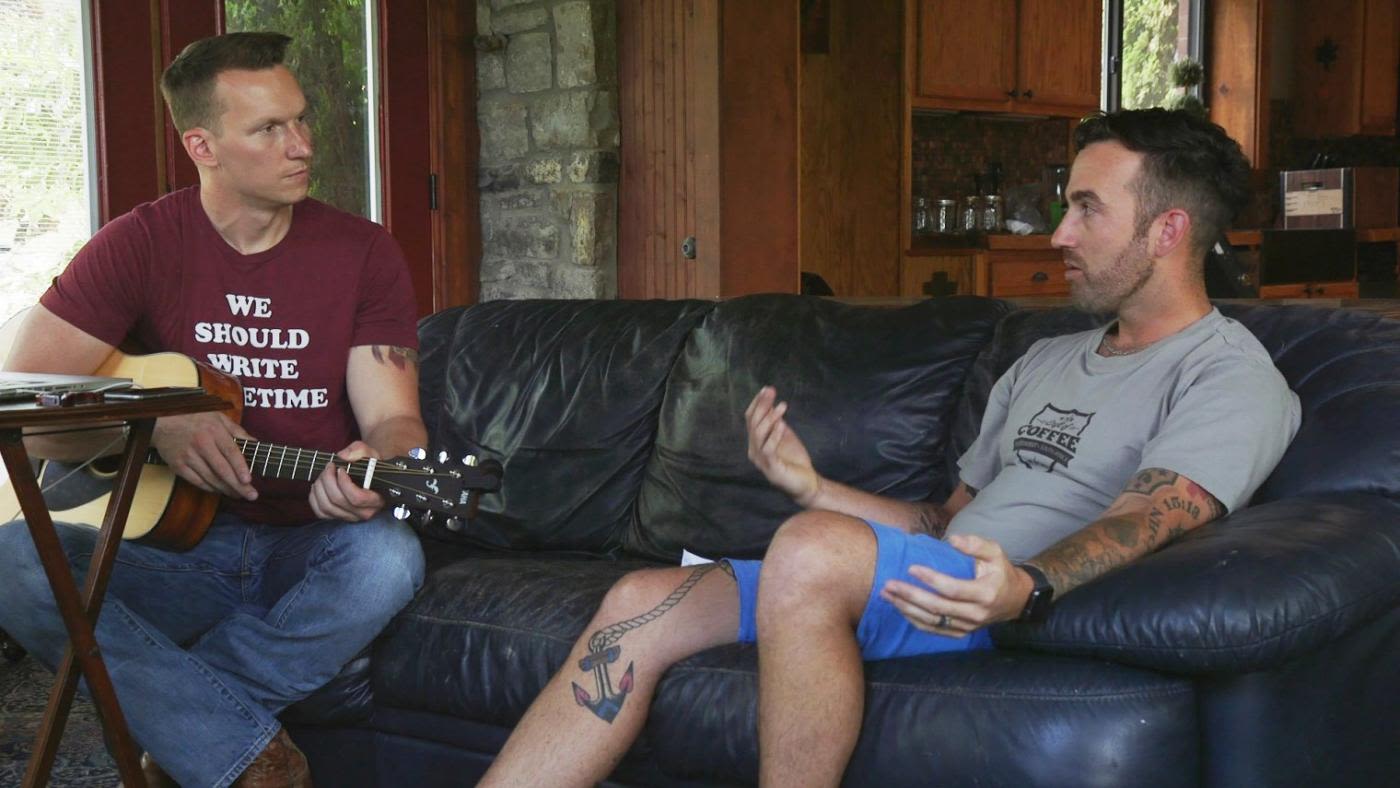How Art Helped US Veteran and Alum Richard Casper Heal

Richard Casper (BFA 2012) teaches Intro to Art for Veterans at SAIC. Photo: Sara Condo
Richard Casper (BFA 2012) teaches Intro to Art for Veterans at SAIC. Photo: Sara Condo
by Joe Giovannetti
Richard Casper (BFA 2012) is a United States Marine veteran. A Purple Heart recipient. A sculpture artist. And the co-founder of a nonprofit that helps veterans heal through art. Safe to say—Casper is not your typical School of the Art Institute of Chicago (SAIC) alum.
Casper grew up in a small town in Illinois where, as he describes, “art was not a thing.” When he graduated high school in 2003, a passion for his country led him straight to the United States Marine Corps, where he helped guard former president George W. Bush at Camp David. In 2006, Casper felt another strong calling—to serve overseas in Fallujah, Iraq.
“I couldn’t [leave] the Marine Corps without knowing that I didn't go serve my country the way I wanted to,” Casper explained. Within the first four months of his service, Casper survived a blast from an improvised explosive device to his vehicle, but a bullet took the life of a friend sitting beside him in the same truck. Casper returned to Illinois three months later, unsure of how to cope with his experiences at war.
“I was still rattled,” Casper said. “I knew something was wrong … I thought it was going to go away."

Image courtesy of the artist
Image courtesy of the artist
Casper first learned of his diagnosis—a traumatic left-brain injury and post-traumatic stress (PTS)—after he enrolled in a speech class and found himself struggling to tell his story. “Here I am. Six-foot-five combat Marine, who guarded the president, went to war, and now I'm in this classroom … and I can't get up in front of these kids and tell a story. I couldn't even read a paper that I wrote because my anxieties were so bad,” he explained.
In search of a place to express himself privately, Casper turned to art. He enrolled in a basic painting and drawing class, where an instructor’s simple suggestion completely shifted Casper’s worldview.
“I had so much inside of me that I needed to get out. I really wanted people to know [my friend’s] story, but I couldn't talk about him without crying and I didn't want to cry around people. I have this photo of me at his grave … So, I start drawing it.”
With a black-and-white outline of the scene complete, Casper began to add color. When he got to the grass, the painting’s final element, his instructor challenged him to use any color but green. Confused, but determined to give it a try, Casper filled in the entire background in one color—red. When it came time to present his drawing, he couldn’t find the words to explain his decision. Instead, one by one, the students offered their interpretations: Anger. Blood. Love. Casper was taken aback: “I'm sitting here thinking, how did they know that from one color? ... What can I do with all the colors?”

Casper visits the grave of his friend who died in combat. Image courtesy of the artist
Casper visits the grave of his friend who died in combat. Image courtesy of the artist

Casper intentionally filled in the grass with a deep red color in this reinterpreted painting of the original image. Image courtesy of the artist
Casper intentionally filled in the grass with a deep red color in this reinterpreted painting of the original image. Image courtesy of the artist
Just a few years later, with an associate of arts degree in hand, Casper enrolled at SAIC. At New Student Orientation, he entered the SAIC Ballroom and felt his anxiety return. He mostly kept to himself, save one student who made light conversation with him at a table in the back, and returned to his residence hall. Then, on the first day of classes, Casper reached a turning point on the way to his classroom:
“And so, I go up, third floor of the [280] Building, and I freak out. I'm legitimately struggling to even open that door. And then around the corner comes that kid that was at the table next to me.” At that moment, Casper felt an unexpected release. “I spilled everything ... and I was like, ‘I just have to have someone know my story and be my battle buddy. Will you go in there with me?’ From that moment on, the School of Art Institute of Chicago saved my life, man.”
Casper initially planned to primarily study painting and drawing, but after his roommate encouraged him to experiment with clay, he fell in love with ceramics. Casper embraced the School’s interdisciplinary philosophy and, along with ceramics, explored a variety of art forms like photography and woodwork; in 2012, he graduated with his bachelor’s in fine arts with a focus in sculpture.
“Art is an option. If I could do it, you can do it.”
After graduation, Casper set out to start a new organization where he could empower wounded veterans to heal through the arts and music. In 2013, he founded CreatiVets. Through songwriting, visual arts, music, and creative writing, CreatiVets helps veterans foster self-expression that “helps [them] live again.” As of this writing, CreatiVets has served more than 870 veterans from 48 states—and the songs they’ve created together have amassed more than one million streams.
At first, Casper started the program in Nashville; now, the program operates in partnership with SAIC, where veterans are flown to Chicago for three-week summer sessions with Casper at his alma mater. “I sit with each veteran, and they tell me their story for the first time, and I show them what that looks like as a conceptual piece of art,” Casper explained. They explore SAIC’s facilities, such as the woodshop, the metal shop, and the 3D print lab, to translate their experiences into art.
When Casper first pitched his project to the School, here’s what he didn’t know: one piece of art and a chance encounter with Vice President and Dean of Community Engagement Paul Coffey during his time as a student would lay the groundwork for their eventual partnership.
“I did a lot of helmet pieces. I would take the amount of veterans who passed away in war, and I’d make a helmet for every one of them.” Casper’s goal, through the presence of helmets on campus, was to invoke a physical representation of the often-unseen support of veterans. One of his creations—an installation in the admissions office titled Late Admissions—caught the attention of Professor Lisa Wainwright, SAIC’s former dean of faculty.
“And then what I didn't know was she went into Paul Coffey's office after that and said, ‘If Richard ever comes back, whatever he's asking for, do it.’” So when Casper came back years later to pitch CreatiVets, Coffey responded with an immediate “yes.”

Richard Casper and retired Petty Officer Chris Goehner during a CreatiVets songwriting session in July, 2017. Photo: Lukas Augustin, Courtesy of Time
Richard Casper and retired Petty Officer Chris Goehner during a CreatiVets songwriting session in July, 2017. Photo: Lukas Augustin, Courtesy of Time

Entrance to Warrior Brain + Artist Mind (2018), an exhibition featuring CreatiVets participants at SAIC
Entrance to Warrior Brain + Artist Mind (2018), an exhibition featuring CreatiVets participants at SAIC
“There are moments in one's career where you meet someone who causes your understanding and perspectives to shift,” Coffey said. “That happened when Lisa introduced me to Richard. He creates an environment in which veterans can be incredibly open about their own personal experiences. They walk away with ... a sense that they are not alone. I think this is some of the most important work that we do as an institution.”
Casper’s dream is to launch a national curriculum that incorporates an Intro to Veterans Art class in every university across the country. His story, along with the stories of the veterans he’s helped along the way, is proof that art and design can influence us in profound, unexpected ways—and, in the end, art is truly for everyone.
“Art is an option,” Casper said. “If I could do it, you can do it.” ■
Casper spoke with the Today Show about his work. Watch here.
{{[http://www.saic.edu/news/alums]ALUMS}} {{[http://www.saic.edu/news/artconnectsus]ART CONNECTS US}}
